Van Gogh, Monet, Rembrandt, Modigliani.
Do you think that paintings by very famous artists in the history of Western art can only be seen abroad or during special exhibitions?
In fact, there are quite a few famous paintings in the collections of museums in Japan.
In this article, we will take you on a tour of famous Western paintings in Japan!
Van Gogh, "Sunflowers
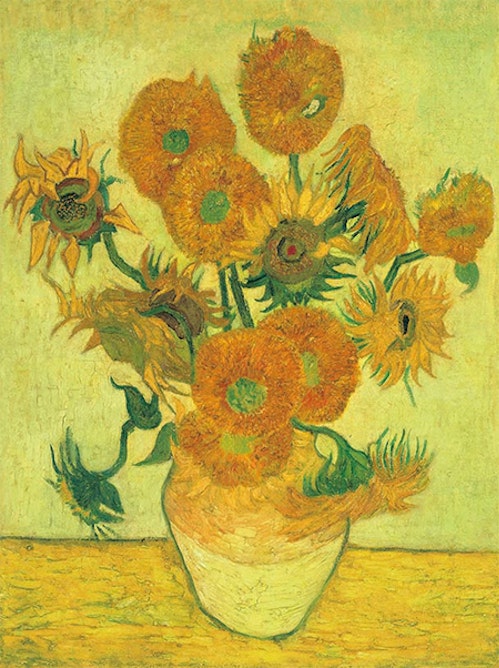
Vincent van Gogh, "Sunflowers" (1888)
Collection: Seiji Togo Memorial Sompo Japan Nipponkoa Art Museum (Shinjuku, Tokyo)
Sunflowers" is the most famous of Van Gogh's paintings.
Of the seven existing paintings, one is in a permanent collection at a Japanese museum.
Van Gogh escaped the depressing atmosphere of Paris and moved to Arles, a city in the south of France, where brilliant and beautiful sunlight shone down on him. He tried to continue his work while living together with his fellow artist Gauguin in Arles.
This sunflower was painted to decorate his room while awaiting Gauguin's arrival.
While the composition is very similar to his other works, it shows how he used regular touches in the background and on the desk on which the vase is placed, as well as subtle adjustments in the orange and yellow color range.
Museum Official Website
Millet "The Sower
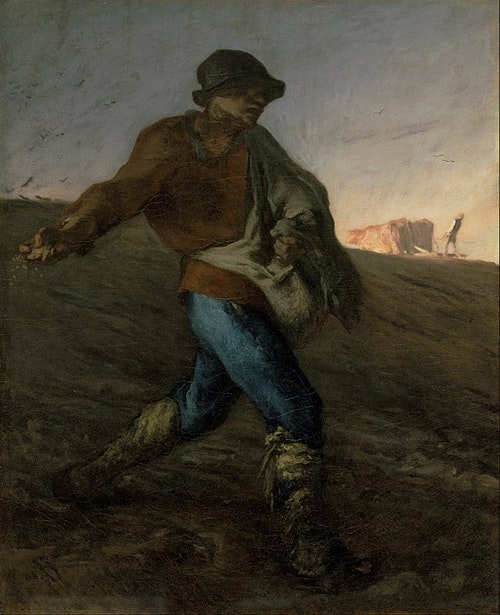
Jean-François Millet, The Sower, 1850.
Yamanashi Prefectural Museum of Art (Yamanashi/Kofu)
Jean-François Millet's "The Sower" is a painting characterized by the strength of its depiction of a farmer who sows seeds and survives.
Exhibited at the Paris Salon (official exhibition) in 1850, the painting is said to have provoked heated debate, as many considered it a political statement protesting the miserable lives of the peasants.
It was also innovative in terms of technique, as it featured a thick application of paint, which is frowned upon in academic painting techniques.
The critic Théophile Gauthier described it as "the figure, with its wild gestures and hideously crude becoming, appears to be painted in the colors of the soil in which the seeds are sown."
Along with Millet, who depicted political and social realities, the same period saw the emergence of Réalist painters such as Courbet and Daumier, a revolution in art history that marked a departure from the idealistic paintings of the past.
Museum Official Website
Monet, "Waterlilies
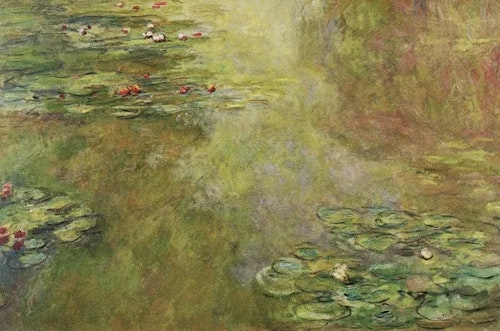
Claude Monet, "Waterlilies" (1918)
MOA Art Museum (Atami, Shizuoka)
Monet often used the technique of "serial painting. Waterlilies was painted many times throughout Monet's life and became his lifework.
This work, 130 x 200 cm in size, is one of the largest water lilies in Japan, and its impressive composition, fine detailing, and gradation make it a worthwhile work.
Painted in the later period of his career, it is an interesting work with an abstract beauty while intentionally retaining the lines of the drawing that form the lotus leaves.
Museum Official Website
Modigliani "Girl with Pigtails
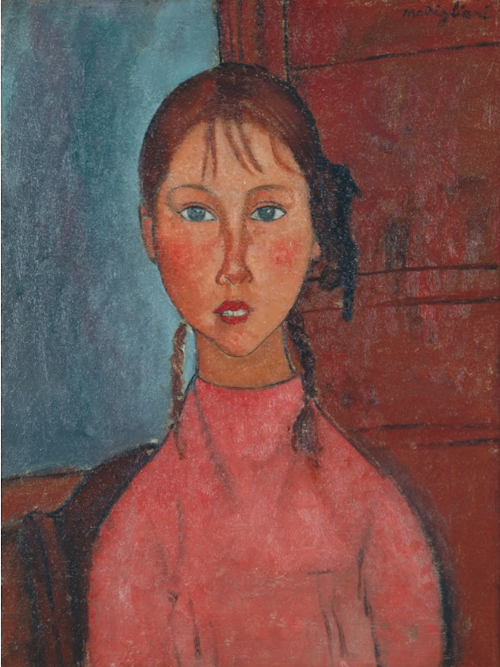
Amedeo Modigliani, Girl with Pigtails, ca. 1918
Nagoya City Art Museum (Nagoya, Aichi)
Modigliani's works are famous for their uniquely deformed figures.
In this painting, the composition depicts a brown-haired girl looking straight at the viewer.
Modigliani is said to have led a decadent life, addicted to alcohol and drugs, but this work appears to be filled with a serenity akin to that of a prayer.
This work is believed to have been painted about a year before the artist's death, when he moved to the south of France to escape the turmoil in Paris during World War I. He may have realized that he was about to die.
Perhaps he was aware of his own mortality, or perhaps he was struck by the purity of the girl, or perhaps both. At the very least, it can be said that this work is imbued with a clean serenity.
Museum's official website
Greco "Annunciation
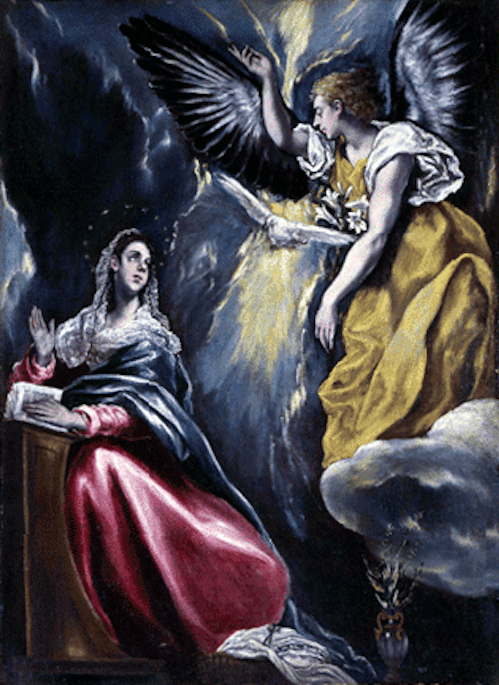
El Greco, "Annunciation" (c. 1590-1603)
Ohara Museum of Art (Okayama/Kurashiki)
Spanish painter El Greco's very distinctive body of work is recognizable at first glance.
The scene in which the Virgin Mary is told by the archangel Gabriel that she is carrying the Son of God in her belly is depicted in striking colors and settings.
El Greco's figures are often very tall and dramatic, with dark nighttime spaces and lightning. The intense emphasis on shading in the folds of clothing and other details is also superb, giving the paintings a unique appeal that is different from their realistic counterparts.
Museum's official website
Rembrandt, Man with a Wide-brimmed Hat
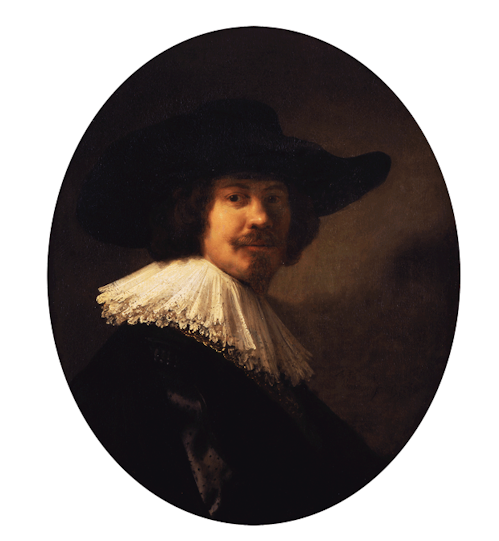
Rembrandt van Rijn, Man with a Wide-brimmed Hat, 1635.
Kawamura Memorial DIC Museum of Art (Sakura, Chiba)
Rembrandt, one of the leading Dutch painters of the 17th century, is known for his portraits and subjects based on mythology and the Bible, using baroque light and dark techniques and skillful psychological portrayal.
It is known that this portrait was originally intended as a pair with a portrait of the model's wife. The two paintings, which would have been displayed side by side in the home of the couple who commissioned the portrait, were probably separated as the model's descendants inherited the property.
The male model is presumed to have been one of the wealthy citizens by his attire and other details. The model's face is lit from the left and his lively expression is depicted in rich shading. The details of his skin, beard, hair, lace collar, and black garment are realistically rendered and the textures are superb.
Museum Official Website
Renoir, "The Reading Couple
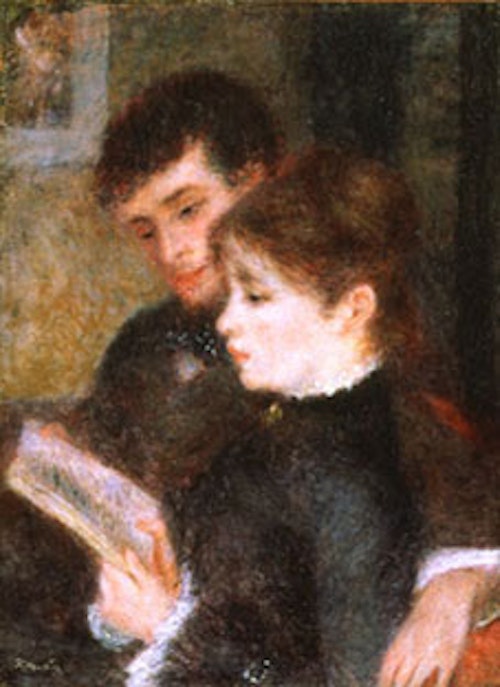
Pierre-Auguste Renoir, The Reading Couple, 1877
The Museum of Modern Art, Gunma (Takasaki, Gunma)
At this time, Renoir depicted the shadows that form the lace ground and smooth skin by accumulating fine touches.
The skin of the girl is pink and full of blood, and the softness of the man watching over her is depicted with a friendly gaze. The girl was Margot, Renoir's model on numerous occasions, and Edmond, Renoir's brother.
Renoir, who repeatedly depicted himself and his close family and friends, is one of the most popular painters in Japan.
Museum Official Website
Manet, Self-Portrait

Edouard Manet, Self-Portrait, 1878-79.
Artison Museum (Kyobashi, Tokyo)
Manet is known for his depictions of the modern city of Paris, but he was also a master of portraiture. As such, only two oil self-portraits by Manet remain (the other is in a private collection).
It must be very valuable that one of the only two paintings in the world that can be seen is in Japan.
The dark, plain background of this painting suggests the influence of Spanish painting, which was popular in Paris at the time.
The artist's expression is carefully finished with a fine touch, but the background and limbs are finished with a very simplified touch.
Manet's mastery of simplification gives us a sense of the new art of the artist, who is also known as the father of Impressionism.
Museum Official Website
James Ensor, Self-Portrait in a Mask
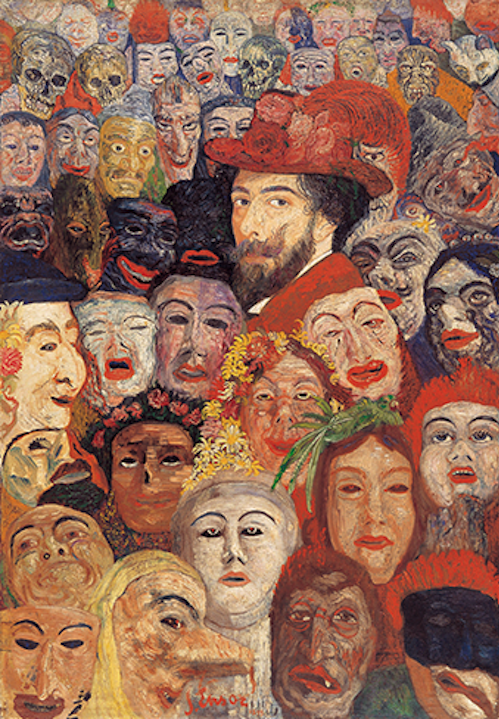
James Ensor, Self-Portrait in Mask, 1899.
Menard Art Museum (Komaki, Aichi)
The Belgian painter James Ensor used masks and skeletons as motifs for his singular imaginative expression. This self-portrait, reminiscent of his great predecessor Rubens, was painted when Ensor was 39 years old.
Surrounded by carnival masks of malice and deception, the artist gazes at us.
The overall impression of the painting is somewhat festive due to the scattered floral decorations, but the masks that fill the painting have a bizarre atmosphere, as if they are rushing toward us.
It is a rare opportunity for a masterpiece representing the peak of Ensor's career to be on permanent display in Japan.
Museum Official Website
Rubens "Two Sleeping Children
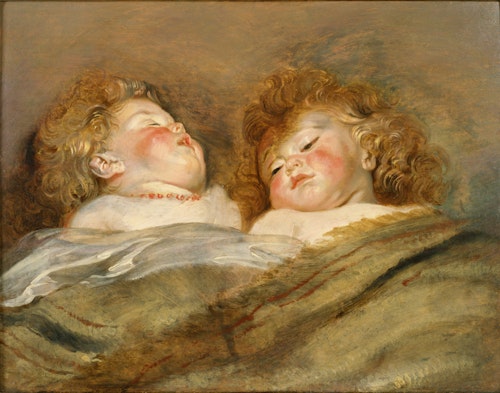
Pieter Paul Rubens, Two Sleeping Children, ca. 1612-13
National Museum of Western Art (Ueno, Tokyo)
Rubens is a representative painter of 17th century Flemish art and Baroque painting.
The two children with innocent sleeping faces are thought to be Clara (right) and Philippe (left), the children of the artist's older brother.
This work, completed with quick brushstrokes, is thought to be a study before the main body of work.
Technically, this work is a good example of Rubens' technique of realism with vivid colors, in which he skillfully depicts the subject through the use of transparent and opaque colors, light and dark tones, and differences in the thickness of the paint.
Museum Official Website
Also read
10 Famous World Paintings|Learn about timeless masterpieces
10 Famous World Paintings|Dive deeper into modern art
Modern Art|5 Japanese Artists of World-Class
Ranking of Famous Paintings|Top 5 Japanese Art
TRiCERA ART members enjoy a wide range of privileges and preferences.
- Discounts such as members-only secret sales and coupons
- Create your own collection by registering your favorite artists
- Receive updates on popular artists, exhibitions, and events
- Receive a weekly newsletter with selected art
- Personal Assessment to find out what kind of art you like.
Please register as a member for free and receive the latest information.
Free Member Registration